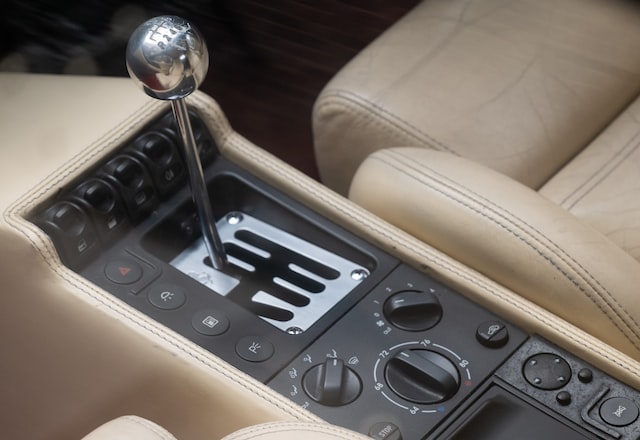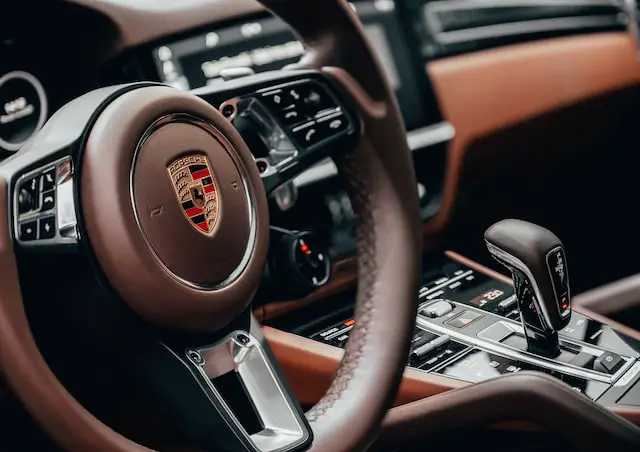Manual transmission requires the driver to manually shift gears using a clutch pedal and gear stick, while automatic transmission uses a torque converter and computer-controlled system to shift gears automatically without the need for driver input.
What is a manual transmission?
(Photo by the blowup on Unsplash )

A manual transmission uses a clutch to connect and disconnect the engine from the transmission. The driver has to manually shift gears in order to change the gear ratio and make the car go faster or slower. An automatic transmission does all of this automatically.
What is an automatic transmission?
(Photo by stefzn on Unsplash )

An automatic transmission is a type of transmission that automatically changes the gears of a vehicle based on the speed of the vehicle. Automatic transmissions are generally more expensive than manual transmissions, but they can provide a smoother ride and require less maintenance.
How do they work?
To understand how a manual transmission works, it is first important to understand the basics of a transmission. A car’s engine produces rotational force, also known as torque. This torque is transferred through the transmission to the drive wheels, which rotate the tires and create power for the car.
A manual transmission has a clutch that disengages and engages the engine from the drivetrain. The driver uses this clutch to control the amount of torque that is sent to the drivetrain. They do this by depressing the clutch pedal, which disengages the engine from the drivetrain, and then using their foot to select the appropriate gear.
Once they have selected the appropriate gear, they release the clutch pedal, which re-engages the engine to the drivetrain and transfers torque to the wheels. The driver can control their speed by manipulating these two pedals (the throttle and the brake) as well as the clutch.
An automatic transmission also has a clutch that disengages and engages the engine from the drivetrain. However, this clutch is operated automatically by hydraulics rather than manually by the driver’s foot. There is no need for a driver to select gears with an automatic transmission – instead, they simply use their foot to control acceleration with the throttle pedal and braking with the brake pedal.
The pros and cons of manual transmission
Manual transmission, also known as a stick shift, has both advantages and disadvantages compared to automatic transmission. Here are some pros and cons of manual transmission:
Pros:
- More control: With a manual transmission, the driver has more control over the vehicle’s acceleration and deceleration, as well as more precise handling in challenging driving conditions.
- Better fuel economy: In general, manual transmission vehicles tend to have better fuel economy than automatic transmission vehicles, due to the efficiency of the manual transmission system.
- Lower maintenance costs: Manual transmissions are generally simpler and have fewer components than automatic transmissions, which can translate to lower maintenance and repair costs over time.
Cons:
- More difficult to learn: Driving a manual transmission vehicle requires more skill and coordination than driving an automatic transmission vehicle, which can be a barrier for some drivers.
- Can be tiring in heavy traffic: The constant shifting and use of the clutch pedal can be tiring and frustrating in heavy traffic or stop-and-go driving situations.
- Resale value: Manual transmission vehicles may have lower resale value than automatic transmission vehicles, as they are less popular and in lower demand in some markets.
Ultimately, the choice between a manual transmission and automatic transmission comes down to personal preference and driving habits. Some drivers prefer the control and engagement of a manual transmission, while others prefer the convenience and ease of an automatic transmission.
The pros and cons of automatic transmission
Automatic transmission has both advantages and disadvantages compared to manual transmission. Here are some pros and cons of automatic transmission:
Pros:
- Convenience: With an automatic transmission, the driver doesn’t need to manually shift gears, making it a more convenient and effortless driving experience.
- Easier to learn: Driving an automatic transmission vehicle is generally easier to learn than driving a manual transmission vehicle, which can be an advantage for new or inexperienced drivers.
- Resale value: Automatic transmission vehicles tend to have higher resale value than manual transmission vehicles, as they are more popular and in higher demand in some markets.
Cons:
- Higher cost: Automatic transmission vehicles are generally more expensive than manual transmission vehicles, both in terms of upfront cost and long-term maintenance costs.
- Lower fuel economy: In general, automatic transmission vehicles tend to have lower fuel economy than manual transmission vehicles, due to the less efficient automatic transmission system.
- Less control: With an automatic transmission, the driver has less control over the vehicle’s acceleration and deceleration, which can be a disadvantage in certain driving conditions.
Ultimately, the choice between a manual transmission and automatic transmission comes down to personal preference and driving habits. Some drivers prefer the convenience and ease of an automatic transmission, while others prefer the control and engagement of a manual transmission.
Which one should you choose?
There are a few key factors you should consider when deciding between a manual or automatic transmission.
One is cost: typically, manuals are less expensive than automatics.
Another is fuel economy: manuals usually get better gas mileage than automatics.
You should also think about your driving habits: If you do a lot of stop-and-go city driving, an automatic might be a better choice for you.
But if you like to have more control over your car, or do a lot of highway driving, a manual might be the way to go.
Do automatic cars use more fuel?
The answer to this question is a bit complicated. It depends on a number of factors, including the type of car, how it is driven, and the terrain. In general, however, automatic cars are more efficient than manual transmission cars.
Automatic transmissions have come a long way in recent years. They are now able to shift gears much faster and smoother than before. This helps the engine run more efficiently and use less fuel.
Another factor that affects fuel consumption is how the car is driven. If an automatic car is driven aggressively, it will use more fuel than if it is driven calmly. The same goes for manual transmission cars. However, in general, automatic transmissions are better at conserving fuel than manual transmissions.
Finally, the terrain also plays a role in fuel consumption. If a car is driven on hilly terrain, it will use more fuel than if it is driven on flat terrain. Again, this applies to both automatic and manual transmission cars. However, autos tend to be more efficient on hilly terrain since they can make use of gravity to assist in shifting gears.
Can I learn manual after automatic?
It is possible to learn how to drive a manual transmission after previously only knowing how to drive an automatic, but it may take some time and practice to get used to the clutch and gearstick. Many people find it helpful to learn with someone who already knows how to drive manual, so they can offer guidance and support. It’s also important to be aware that not all vehicles come with a manual option, so you may have to do your research before making the switch.
Do manuals accelerate faster than automatics?
There is a misconception that manuals accelerate faster than automatics. However, in most cases, this is not true. The main difference between the two types of transmissions is how the gears are selected. In a manual transmission, the driver has to manually select the gear they want to be in. Whereas in an automatic transmission, the gear selection is automatically done by the transmission itself based on factors such as speed and engine load. This can sometimes result in smoother shifting and less wear and tear on the car overall.
Featured Image By – Photo by Unervi González on Unsplash








